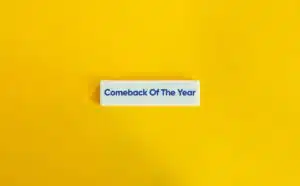“Help! How do I get out of all these meetings?” we ask, with beads of sweat glistening upon our brows. And then all the usual suspects respond with overly simplified solutions.
Seriously. Google “How to decline a meeting” and see what pops up. Very little of the advice is useful, especially if we care about keeping our jobs.
Protecting our schedules (and our sanity) isn’t as simple as learning clever or snarky ways to graciously decline an invite here and there. Conquering meeting overreach is bigger than that.
Luckily, there is an untapped superpower waiting in the wings. A silver bullet that can bring a world of chaos into order.
“No way,” you say. And I say, “It’s true!” It’s the fine art of saying “no.”
Of course, like everything else, “no” has nuances. We can’t just run around the office flinging it at everyone we see. That’s madness.
We need to be judicious about how, when, and where we use it. Here then, are four beautifully nuanced ways to power your career and your business by letting go of all those “yeses” and embracing the “no.”
Get a True Grip on Your Projects
Just like people, projects need boundaries. As professionals and leaders, we try to say yes to projects we know we can handle deftly. But here’s what no one is talking about.
Exactly 4 milliseconds after we’ve agreed to take on a new project, it begins to grow.
“It’s not that meetings and projects get added to our to-do lists,” says a friend of mine. “It’s that the projects we have accepted and thought we could handle based on the parameters presented … grow.”
And he’s right. Everything is connected to everything else. After agreeing to take on a project, you can’t just say, “Oh, I’ll refuse to do that third of the project.”
The answer? Create a formal process around project starts and get specific. Define the scope of what you are agreeing to do in writing. If anything new comes along that is outside of that scope, it’s a new project.
Stop the Email Madness
“If you guys read your emails, we wouldn’t need a meeting,” says another colleague. And I feel her pain. A lot of extra time is spent re-doing tasks and repeating conversations that weren’t done right the first time—because we were in a rush and just skimmed the headlines.
The answer? Sometimes, we have to slow down to speed up. We have to say no to stream-of-consciousness emails. Take the time necessary to be sparing, clear, and succinct in the emails we send. If someone is in the habit of sending out braindumps, reply-all and ask them to summarize it for the people who don’t have a lot of time. That’s a clear “Yeah, no.”
And we all have a phone person in our lives, don’t we? Someone who rarely reads emails, only skims them from time to time. Someone who responds only to phone calls and is quick to hang up when he or she thinks they’ve got the gist of your message.
This is a high-powered “no.” This person does not, and never will, want the whole story. This is where Post-it Notes are great. Summarize your message in three bullets on the note. (I like the bright green ones.) Then dial, hit your three bullet points and say, “Thanks, that’s all I need.”
What if that phone person calls you? A lot of leaders who go through our Courageous Leadership on-demand development program comment on how one piece of advice in particular has changed their lives. That’s the advice to “repeat/clarify the question you’re asked” before you answer so you know you’re giving them the detail they need as opposed to extraneous stuff.
Make Your Meetings “Exclusive” Events
Meeting planners, party planners, what’s the diff? A lot, it turns out. We need to be hyper-aware of the tendency for over-eager meeting schedulers to think of the task like party planning.
I don’t have enough fingers and toes to count how often I’ve been asked by an excited scheduler, “Who else should we invite?” Or even better, “What other activities can we do while we have everyone together?” Yippee!
Marie Kondo asks us to clear anything out of our closets that doesn’t bring us joy. As business leaders, we need to clear anything out of our meetings that doesn’t bring us progress.
Instead of asking what we can add to our meetings, we need to ask, “Who isn’t really necessary?” and “Are any of these activities better done individually before or after the meeting?”
“What is the actual purpose of this meeting?”
“Do we really need everyone’s buy-in to get this project going?”
“Could we just do a quick meeting with the decision maker instead?”
This is a great example of how “no” actually helps us get our work done more efficiently. So that we can go home, dress up, and go to an actual party.
Technology is Rarely the Answer
This is the piece of advice I call “how to say ‘no’ to technology and survive.”
Trust me on this one. My team and I have tried out every possible productivity solution on the planet. Productivity tech is cool. And evolving.
And, like one-size-fits-all sweaters, designed to fit an “average” that doesn’t exist.
Most of us are busy, so we just succumb to the limitations of whatever platform our tech gurus managed to get for us.
Saying “no” to that common denominator takes a little extra effort. And it’s totally worth it.
Do we really need to use that fancy feature? No.
Must the meeting last a half-hour? No. Hang up after 10 minutes.
Actually, saying “no” to tech is kind of the most fun of all. It’s energizing and empowering.
Do I even have to keep typing just because this bullet point is shorter than the others?
No. No, I do not.
I think we’re done here. Thanks for reading.
Cindy’s Courage Challenge: Set one boundary, summarize one message, slim down one meeting, and defy one robot. Report back in the comments below.

Thanks for reading! KARMA POINTS: Take a minute right now to share this article with someone who needs to read it.
At the Courageous Leadership Institute, we leverage our work with over 300,000 leaders and employees from 400+ companies to offer leadership programs that impact results with customers and employees immediately.
Cindy Solomon is CEO of the Courageous Leadership Institute, a thriving global leadership training and research organization with access to up-to-the-minute insights on how today’s most innovative corporations are defining the future of business. She is also the author of two books, The Rules of Woo and The Courage Challenge Workbook.










1 thought on “A Masterclass in the Art of Saying “No.””
Loved the brevity and wisdom!